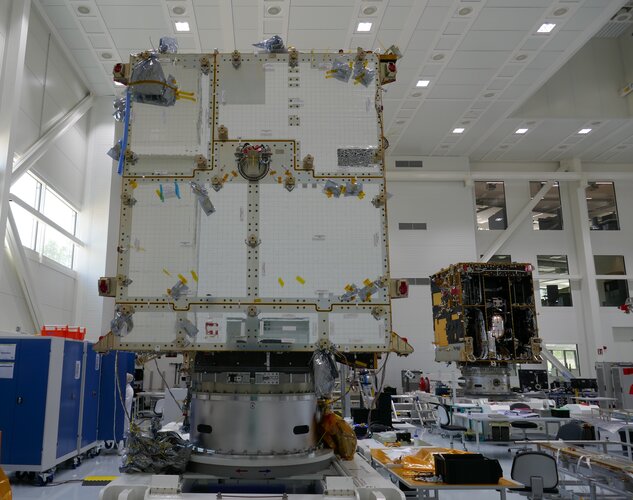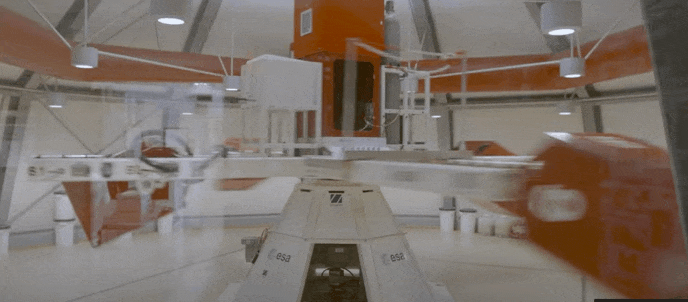
Copernical Team
Astronomer recruiting volunteers in effort to quadruple number of known active asteroids
 The study of active asteroids is a relatively new field of solar system science, focusing on objects that have asteroid-like orbits but look more like comets, with visual characteristics such as tails.
Because finding an active asteroid is such a rare event, fewer than 30 of these solar system bodies have been found since 1949, so there is still much for scientists to learn about them. Rou
The study of active asteroids is a relatively new field of solar system science, focusing on objects that have asteroid-like orbits but look more like comets, with visual characteristics such as tails.
Because finding an active asteroid is such a rare event, fewer than 30 of these solar system bodies have been found since 1949, so there is still much for scientists to learn about them. Rou The case of the missing mantle
 In the early solar system, terrestrial planets like Mercury, Venus, Earth and Mars are thought to have formed from planetesimals, small early planets. These early planets grew over time, through collisions and mergers, to make them the size they are today.
The material released from these violent collisions is commonly thought to have escaped and orbited around the sun, bombarding the grow
In the early solar system, terrestrial planets like Mercury, Venus, Earth and Mars are thought to have formed from planetesimals, small early planets. These early planets grew over time, through collisions and mergers, to make them the size they are today.
The material released from these violent collisions is commonly thought to have escaped and orbited around the sun, bombarding the grow The forecast for Mars? Otherworldly weather predictions
 As scientists prepare for crewed research missions to nearby planets and moons, they've identified a need for something beyond rovers and rockets.
They need accurate weather forecasts. Without them, any trip to the surface may be one dust storm away from disaster.
A new Yale study helps lay the foundation for more accurate, otherworldly forecasts by taking a phenomenon related to Ear
As scientists prepare for crewed research missions to nearby planets and moons, they've identified a need for something beyond rovers and rockets.
They need accurate weather forecasts. Without them, any trip to the surface may be one dust storm away from disaster.
A new Yale study helps lay the foundation for more accurate, otherworldly forecasts by taking a phenomenon related to Ear NASA plans yearlong Mars simulation to test limits of isolation
 NASA wants four people to test the limits of human isolation by placing them in a simulated Mars habitat for a year, cut off from the world except for delayed communication and possible simulated spacesuit walks.
The simulation, planned for Johnson Space Center in Houston, won't be the first time the space agency attempts to mimic a stay on Mars, but it will be one of the longest.
NASA wants four people to test the limits of human isolation by placing them in a simulated Mars habitat for a year, cut off from the world except for delayed communication and possible simulated spacesuit walks.
The simulation, planned for Johnson Space Center in Houston, won't be the first time the space agency attempts to mimic a stay on Mars, but it will be one of the longest. Meteosat Third Generation takes major step towards its first launch

After many technical and programmatic challenges, the first satellite of the next generation of the Meteosat family has taken a major step towards its first flight, currently scheduled for launch in autumn 2022.
NASA's Deep Space Network looks to the future

When NASA's Mars 2020 Perseverance rover touched down on the Red Planet, the agency's Deep Space Network (DSN) was there, enabling the mission to send and receive the data that helped make the event possible. When OSIRIS-REx took samples of asteroid Bennu this past year, the DSN played a crucial role, not just in sending the command sequence to the probe, but also in transmitting its stunning photos back to Earth.
The network has been the backbone of NASA's deep space communications since 1963, supporting 39 missions regularly, with more than 30 NASA missions in development. The team behind it is now working hard to increase capacity, making a number of improvements to the network that will help advance future space exploration.
Student-designed experiment to measure Earth's magnetic field arrives at Space Station

Oscar-Qube, short for Optical Sensors based on CARbon materials: QUantum Belgium, is an experiment developed by a group of students from the University of Hasselt, Belgium. Part of ESA Education Office's Orbit Your Thesis! program, the experiment arrived at the International Space Station on Space X Dragon CR23 resupply mission yesterday.
This week, ESA astronaut Thomas Pesquet will install the experiment in the Ice Cubes Facility that offers commercial and educational access to the microgravity environment of the Space Station.
Oscar-Qube's mission is to create a detailed map of Earth's magnetic field. It makes use of a new type of magnetometer that exploits diamond-based quantum sensing, meaning that it is highly sensitive, offers measurements to the nano scale, and has a better than 100-nanosecond response time.
These features combine to create a powerful experiment that, once in position, will allow it to map the Earth's magnetic field to an unrivaled level of precision.
Oscar-Qube is designed and built exclusively by the first student team to test a diamond-based quantum technology sensing device in space. They will go on to manage operations during its 10-month stay onboard the International Space Station.
ESA and UN offer worldwide access to hypergravity testing

ESA and the United Nations Office for Outer Space Affairs are opening the second round of their HyperGES fellowship, part of the Access to Space For All Initiative, offering student teams around the globe the chance to perform hypergravity experiments using the Large Diameter Centrifuge at ESA’s ESTEC technical centre in the Netherlands, with a particular focus on developing nations.
China wants to build a spaceship that's kilometers long

It's no secret that China has become a major contender in spaceflight. In the past 20 years, the China National Space Agency (CNSA) has accomplished some historic firsts. This includes sending astronauts to space, deploying three space stations (as part of the Tiangong program), developing heavy launch vehicles (like the Long March 5), and sending robotic explorers to the far side of the moon and Mars.
Looking ahead to the next decade and beyond, China is planning on taking even bolder steps to develop its space program. Among the many proposals the country's leaders are considering for its latest five-year plan, one involved creating an "ultra-large spacecraft spanning kilometers." Having this spacecraft in low Earth orbit (LEO) would be a game-changer for China, allowing for long-duration missions and the use of space resources.
Cold planets exist throughout our Galaxy, even in the Galactic bulge
 Although thousands of planets have been discovered in the Milky Way, most reside less than a few thousand light years from Earth. Yet our Galaxy is more than 100,000 light years across, making it difficult to investigate the Galactic distribution of planets. But now, a research team has found a way to overcome this hurdle.
In a study published in The Astrophysical Journal Letters, research
Although thousands of planets have been discovered in the Milky Way, most reside less than a few thousand light years from Earth. Yet our Galaxy is more than 100,000 light years across, making it difficult to investigate the Galactic distribution of planets. But now, a research team has found a way to overcome this hurdle.
In a study published in The Astrophysical Journal Letters, research 
